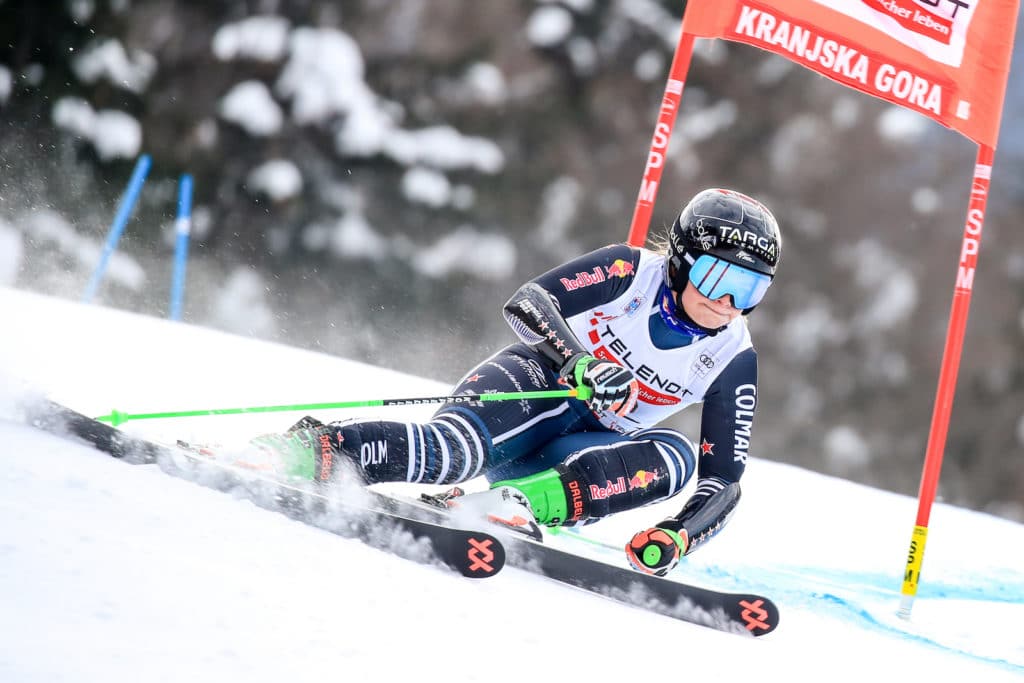So who doesn’t have Covid?

[ad_1]
Steve Porino
The toughest thing in women’s World Cup skiing right now is tracking who will be racing and who will not. So far nearly half of the top-20-ranked GS skiers either have or have recovered from Covid. Newest to the positive list is Austria’s Stefanie Brunner and Slovenia’s Andreja Slokar, who will have to sit out her only home race of the season in Kranjska Gora. Topping the cleared list is Lara Gut-Behrami, who missed three giant slalom races, a super G and a downhill. With five of her 28 possible starts lost, it’s difficult to see any path to an overall title for the 2021 runner-up. Federica Brignone is nursing a sore knee and is scheduled to return to racing next week in Zauchensee. The Swedes have been hit the hardest. The five they fielded in the last giant slalom have been whittled down to two.
Among the active Swedes is Mikaela Shiffrin’s biggest rival in the giant slalom title race, Sara Hector. For the 29-year-old, Kranjska Gora could be her seminal moment. At the age of 22, Hector seemed destined to vie for giant slalom titles for years to come. Then, on December 12, 2015, she shredded the cartilage behind the patellar of her left knee. It was a complicated and debilitating injury for a skier who had built her skills on the shoulder of notoriously long days on the slope — a train-aholic whose knee would no longer tolerate the long hours she so relied on. A half-dozen years later, she has defied the doubter and is able to take the red leader’s bib in the giant slalom standings. A win will do it, or even second place if she can stay in front of Mikaela Shiffrin.
Like several others, Shiffrin is still recovering from her bout with Covid. “She is feeling better,” said her coach Mike Day adding, “It took a toll on her fitness and obviously on snow training.” She heads into Kranjska with two quality days of training since the last races in Zagreb, but Day said it might be another few weeks before she is “totally caught up.”

Women’s giant slalom, more than any other discipline, waits for no one. Lurking in the field are three past winners of this race: Tessa Worley, third in the GS standings, Marta Bassino, who won the consecutive GS races last year, and Alice Robinson who won in 2020, in what I still think was the fastest single demonstration of women’s GS ever. However, both Bassino and Robinson will arrive with their confidence rattled. For the Kiwi, it’s mostly been a matter of Covid, which forced her out of two starts followed by an error-filled DNQ. Bassino, who dominated the field last year, has only found the finish twice in four tries. Both she and Robinson prefer the ice that often punctuates conditions in Kranjska, but the 2022 edition has received a blanket of snow in the days leading up, likely calling for a more subtle touch.
U.S. coach Magnus Andersson says Nina O’Brien is beginning to rediscover her touch in the last two days, since returning from her bout with Covid. It was the 2021 edition of Kranjska that sparked O’Brien’s last season to where she started to show her podium speed. Paula Moltzan continues to learn the nuances of skiing with a broken wrist, which is far more problematic in slalom than GS, but there remains a couple of tenths she just knows she will lose out for the start. AJ Hurt, after testing positive before Zagreb, remains on the sidelines. Her spot will be used by Nicola Rountree-Williams for her World Cup GS debut just days after making her first slalom start in Zagreb.
[ad_2]
Source link






